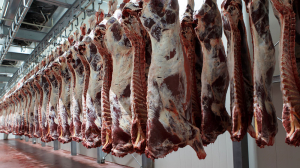


This is the third of a set of articles on legal and tax-related aspects for operating a business in China, mainly through a legal entity in the country. Read here the first article on registered capital in China and the second article on setting favourable tax terms in your sales contracts. This article was written by Integra Group, an established provider of company secretarial, accounting, tax, HR, and financial advisory services in China.
The contents are within the sole responsibility of the author and do not necessarily reflect the views of the EU SME Centre or the EU.
Whether a multinational corporation with operations in various countries or an early-stage business, businesses are naturally concerned about the amount of tax they pay. Businesses aim to achieve greater tax efficiency and improve cash flow through effective tax planning. However, when operating in overseas markets, a key challenge is always to navigate the various local tax laws and regulations that apply to the business and its activities.
Tax planning is the means by which businesses regularly assess and strategically manage the tax liability arising from their business activities. Generally, this includes Corporate Income Taxes (CIT), Value-Added-Tax (VAT), and Individual Income Taxes (IIT). As the complexity of a business increases, so do the tax planning considerations. We share here some of the key tax planning considerations for businesses of all complexities to guide foreign investors in China.
During the company setup stage, business owners must make several decisions that will impact the future tax payables of the business.
Applying for small-scale VAT taxpayer status allows businesses to apply a flat 3% VAT rate on both products and services – as opposed to the standard 6% (servicing) and 13% (product trading) paid by General VAT Taxpayers. However, small-scale VAT taxpayers are not allowed to offset their VAT payable using input VAT deductions. Instead, they pay a flat 3% VAT on gross sales revenue.
Determining which taxpayer status is more efficient varies case by case depending on several factors. These include the amount of estimated input expenses, who your suppliers are, the expected turnover of the company, etc. We suggest working with a professional tax accountant to determine the most efficient taxpayer status based on individual circumstances.
Tax rates vary between 9% to 13% for products and 6% for services. Separating products and services allows businesses to apply a lower tax rate for revenue generated through services. Generally, both product and service business scopes can be applied for under a single business license. However, in some cases where it is difficult to separate the service from the product – such as certain hardware and software applications – the company may be required to register two separate companies to effectively apply a lower tax rate.
Additionally, in order to qualify for various preferential policies and incentives, businesses must meet a specified business scope. The business scope cannot be too broad, or it might hamper the business’ ability to apply for preferential treatment and incentives.
There are various preferential policies and incentives provided in China. These include reduced tax rates, special “super deductions”, tax holidays, reduced interest rates, cash incentives, and other fiscal stimuli. Preferential policies follow the current economic agenda outlined in the various “Encouraged Catalogues” and can change frequently. Generally, they are awarded based on the following factors:
Business activities – such as infrastructure investment, high-new technology enterprises (HNTEs), and other industries meeting the economic and social development needs of each region.
Location – such as Free Trade Zones (FTZ), High-Tech parks, Belt and Road Initiative (BRI) areas, Guangdong-Hong Kong-Macao Greater Bay Area (GBA), Hainan Free Trade Port and other areas outlined as “in need” for investments (for example: China’s Western regions).
The first stage of applying for preferential tax treatment and incentives requires you to engage with an advisor to determine whether your business meets the qualifications set out by local jurisdictions. In some cases, the criteria are clearly laid out. At other times, this involves liaising with the relevant regional authorities over the permissible business activities and incentives.
Micro- and Small-Sized Enterprises (MSEs) are defined as “having a relatively small size in personnel and scope of business”. The standard for classification of MSEs is based on the industry, operating income, total assets, and the number of employees belonging to a company. Over 95% of all Chinese businesses classify as MSEs.
Various preferential tax policies target China MSEs and effectively reduce the tax payable up to prescribed limits, including:
The transactions a business engages in its daily operations not only have an impact on the cash flow, but also on the underlying tax liability of the business. Effectively managing the taxes you pay requires an understanding of how transactions are recorded and their related bookkeeping procedures. Below are some tax planning matters to be considered:
China’s official VAT invoices (fapiao) play an important role in the daily tax planning of businesses. Once a fapiao is issued, the resulting VAT payable is due upon the next VAT declaration.
Chinese businesses are required to self-declare and pay VAT monthly or quarterly depending on their taxpayer status. However, special transactions – such as overseas remittances – can sometimes require the business to pre-pay VAT.
Generally, businesses should be mindful when issuing fapiao and carefully monitor each invoice to avoid issuing duplicate fapiao. Good practice is to specify in sales contracts when a fapiao is issued and align those terms with the collection of sales revenues. Businesses should also be mindful of purchase contracts and request fapiaos be issued together with the payments made to those suppliers.
Taxable income is revenue minus qualified expense deductions. Whether the company made a profit or not, an unqualified deduction can result in the business paying CIT on some of its expenses.
Expenses entered into the financial records without an accompanied fapiao, or an unqualified fapiao attached, are considered to be unqualified expenses. It is important for the business to maintain up-to-date financial records and implement procedures to ensure supporting fapiao are qualified to protect the integrity of their accounting records.
The deductibility for certain expenses is limited based on the thresholds set by the tax authority. Expenses beyond these limits are required to be “added back” for income calculation purposes and levy applicable CIT rates to said amount. It is important to monitor these tax-deductible thresholds and be mindful of the additional tax payable above these limits.
Author: Integra Group
Integra Group is a fully licensed Asia-focused accounting, taxation, and business advisory firm – with dedicated offices in Shanghai, Beijing, Singapore and Taipei. We’ve helped companies ranging from Fortune 500 companies to small to medium sized businesses to establish and grow their presence in Asia.
Find out more on Integra Group’s website.
Contact Integra Group.